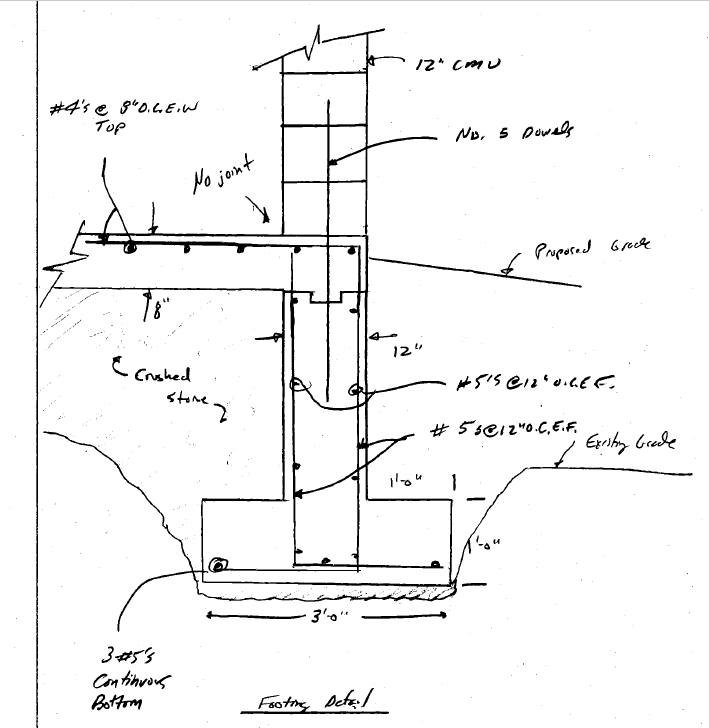CivilPipe
Civil/Environmental
- May 24, 2011
- 22
I am interested in your opinions on this footing detail. Notice that there is no joint between the footing and the slab on grade.
Thanks!

Thanks!

Follow along with the video below to see how to install our site as a web app on your home screen.
Note: This feature may not be available in some browsers.
If you are worried about the slab settling, instead of using the stub steel contractors hate as it destroys their forms, you could always make the footing 14" wide and bear the end of the slab on the 2" lip.
A little more concrete, but a lot less hassle
